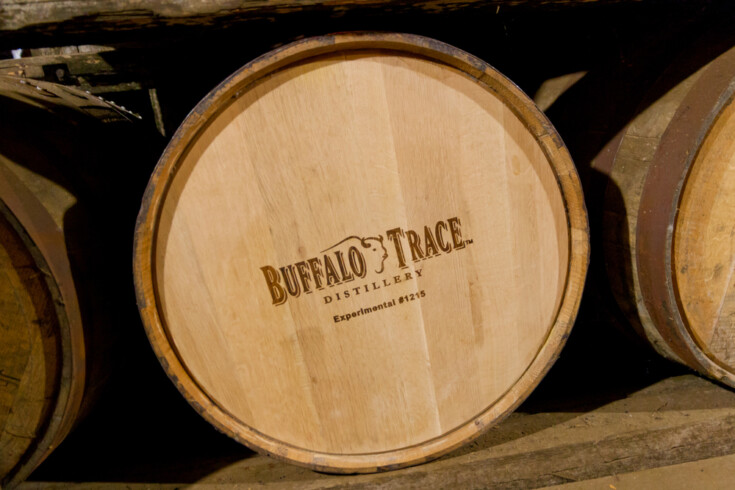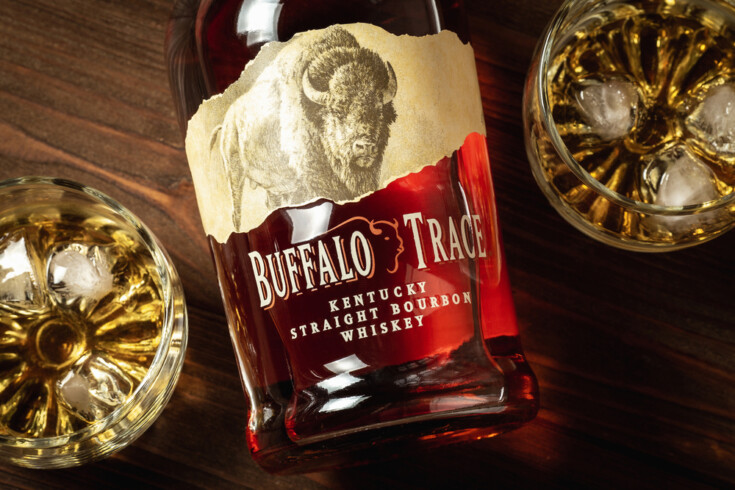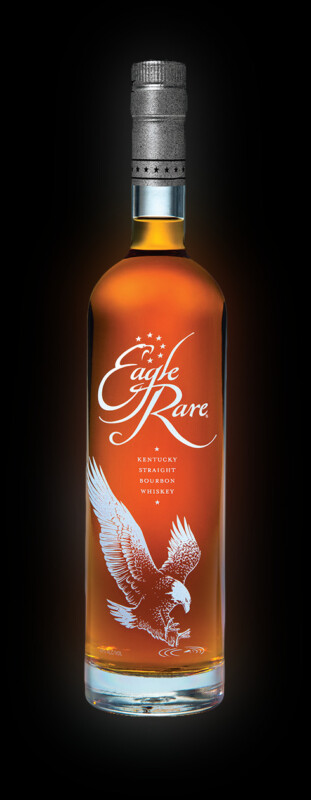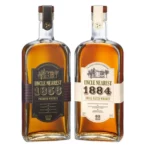
If you are a bourbon enthusiast, you have likely come across the debate between Buffalo Trace Bourbon and Eagle Rare Bourbon. Both are produced by the Buffalo Trace Distillery and are highly regarded in the bourbon community. However, there are some key differences between the two that make them unique in their own way.
Buffalo Trace Bourbon is the flagship bourbon of the distillery and is made using the same mash bill as Eagle Rare. It is a smooth and well-balanced bourbon that is aged for an undisclosed amount of time, although it is rumored to be between 7 and 9 years old. On the other hand, Eagle Rare Bourbon is aged for either 10 or 17 years, depending on the specific bottle, which gives it a dryer and oakier taste compared to Buffalo Trace.
While both bourbons are priced similarly, Eagle Rare is more difficult to find due to its limited supply, which has caused its price to skyrocket in recent years. Despite this, many bourbon enthusiasts believe that the extra aging and unique flavor profile of Eagle Rare make it worth the higher price tag. Ultimately, the choice between Buffalo Trace and Eagle Rare comes down to personal preference and what you are looking for in a bourbon.
Table of Contents
History of Buffalo Trace and Eagle Rare Bourbons
If you’re a bourbon lover, you’ve likely heard of Buffalo Trace and Eagle Rare bourbons. These two brands are both produced by Buffalo Trace Distillery, which has a long and storied history in the world of bourbon.
Buffalo Trace Distillery was founded in 1775 and has been producing bourbon ever since. Over the years, the distillery has changed hands several times and has been known by different names, including the Old Fire Copper Distillery and the George T. Stagg Distillery. Today, it is known as Buffalo Trace Distillery and is owned by the Sazerac Company.
Buffalo Trace bourbon was first introduced in 1999 and has since become one of the most popular bourbons on the market. It is aged for 7-9 years and has a smooth, mellow flavor with notes of vanilla and caramel. Buffalo Trace is also known for its affordable price point, making it a favorite among bourbon enthusiasts.
Eagle Rare bourbon, on the other hand, was introduced in 1975 and is a bit more exclusive than Buffalo Trace. It is aged for at least 10 years and has a richer, more complex flavor profile. Eagle Rare is known for its notes of honey, apples, oranges, charred oak, cinnamon, and cloves. It is bottled at 90 proof and is considered a premium bourbon.
Production Process
Ingredients
Both Buffalo Trace and Eagle Rare are bourbons made in the USA. They are made using different ingredients. Eagle Rare is made using corn and rye grains, while Buffalo Trace is made with wheat, barley, rye, and other grains. The use of different grains gives each bourbon a unique flavor profile.
Mash Bill
The mash bill is the recipe of grains used to make the bourbon. Eagle Rare and Buffalo Trace have different mash bills. Eagle Rare uses a mash bill of 75% corn, 10% rye, and 15% barley, while Buffalo Trace uses a mash bill of 10% rye, 10% barley, and 80% corn. The difference in mash bills contributes to the difference in flavor between the two bourbons.
Distillation Process
The distillation process is where the fermented mash is heated to separate the alcohol from the water and grains. Both Eagle Rare and Buffalo Trace use a column still to distill their bourbons. Column stills are known for producing a lighter and smoother spirit compared to pot stills.
Aging Process
The aging process is where the bourbon is aged in barrels to develop its flavor and color. Eagle Rare is aged for a minimum of 10 years in American white oak barrels, while Buffalo Trace does not have an age statement. However, it is believed to be aged between 8 and 10 years. The longer aging process of Eagle Rare gives it a richer and more complex flavor compared to Buffalo Trace.
Tasting Notes
Buffalo Trace Bourbon Tasting Notes
 photo Editorial credit: NewStart / Shutterstock.com
photo Editorial credit: NewStart / Shutterstock.com
When you take a sip of Buffalo Trace Bourbon, you’ll notice a smooth and sweet taste with a hint of vanilla and caramel. The flavors are well-balanced, with a subtle spiciness and a touch of oak. The finish is long and satisfying, with a lingering sweetness that leaves you wanting more.
If you’re a fan of bourbon cocktails, Buffalo Trace is a great choice. Its smooth flavor profile makes it a versatile base for a wide range of drinks, from classic Old Fashioneds to more complex creations.
Eagle Rare Bourbon Tasting Notes
 photo source: www.buffalotracedistillery.com
photo source: www.buffalotracedistillery.com
Compared to Buffalo Trace, Eagle Rare Bourbon has a bolder and more complex flavor profile. You’ll taste notes of honey, toffee, and dark fruit, with a hint of spice and a robust oakiness. The finish is long and intense, with a pleasant warmth that lingers on the palate.
Eagle Rare is an excellent sipping bourbon, best enjoyed neat or on the rocks. Its rich and complex flavors make it a great choice for special occasions or when you want to treat yourself to something truly exceptional.
Price and Availability
When it comes to price, both Buffalo Trace and Eagle Rare are relatively affordable bourbons, with an MSRP of $30. However, due to their popularity and limited availability, prices can vary greatly depending on where you live and where you purchase them from. Currently, Eagle Rare is sold anywhere between $50-$75, while Buffalo Trace is a bit more stable at around $30.
If you’re lucky enough to find either of these bourbons at their MSRP, then they are both great values for their quality. However, if you’re willing to spend a bit more, Eagle Rare may be worth the extra cost for its unique flavor profile and aging process.
Availability can also be a challenge for both of these bourbons, especially Eagle Rare. As a single barrel bourbon, each bottle is unique, and not every barrel is selected for bottling. This means that Eagle Rare can be harder to find than Buffalo Trace, which is produced in larger quantities and is not a single barrel bourbon.
However, both of these bourbons are widely distributed and can be found at most liquor stores and online retailers. If you’re having trouble finding them in your area, it may be worth checking with local bars and restaurants that specialize in bourbon to see if they have it in stock.
Conclusion
After comparing Buffalo Trace and Eagle Rare bourbons, you may be wondering which one is the better choice for you. Ultimately, it comes down to personal preference and what you’re looking for in a bourbon.
If you’re looking for a more affordable option that still delivers on taste and quality, Buffalo Trace may be the way to go. It has a well-balanced flavor that is great for sipping or using in cocktails, and it’s widely available at a reasonable price point.
On the other hand, if you’re willing to spend a bit more and want a bourbon with a more complex flavor profile, Eagle Rare may be the better choice. Its longer aging process gives it a dryer and oakier taste that some bourbon enthusiasts prefer.
Both bourbons have their own unique qualities and it’s worth trying both to see which one you prefer. At the end of the day, you can’t go wrong with either Buffalo Trace or Eagle Rare.



